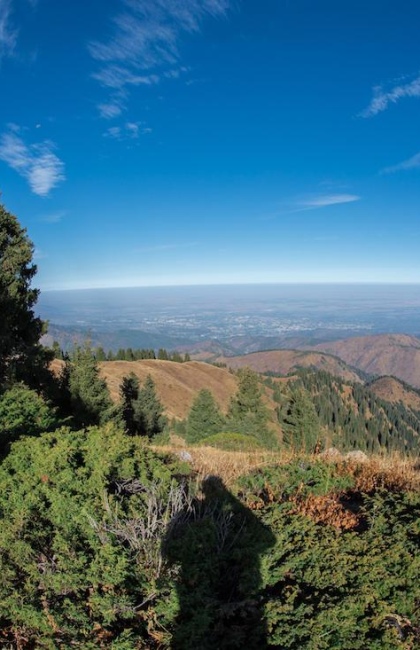Turkistan was founded around 500 AD at the crossroads of caravan routes from Samarkand, Bukhara and Khiva in northern Kazakhstan. The city was known as the spiritual and political center of the Turkic-speaking people in the XVI-XVIII centuries, and was the capital of the Kazakh Khanate. Turkistan has gained wide international reputation due to preaching activity of the famous Sufi sheikh and philosopher Khoja Ahmed Yasawi, who was buried in a small mausoleum here in 1166. The existing mausoleum was erected after 233 years after his death by the order of an outstanding military leader Emir Tamerlane, and today it is a masterpiece of medieval architecture and one of the main places of worship for Muslims. According to legend, all the attempts to build a wall of the mausoleum failed: in one version it was demolished by the big storm, in another version – it was a green bull who came and destroyed everything. A saint, appeared in Tamerlane’s dream, said that at first you ought to build a mausoleum over the grave of Arystan Bab (teacher and spiritual mentor of Khoja Ahmed Yasawi), and only then - over the tomb of Khoja Ahmed Yasawi, what Tamerlane did. That is why pilgrims primarily visit the mausoleum of Arystan Bab, and then Mausoleum of Khoja Ahmed Yasawi. Pilgrims say that three trips to Turkistan equal to small Hajj to Mecca.
Location:
Turkistan
Turkistan was founded around 500 AD at the crossroads of caravan routes from Samarkand, Bukhara and Khiva in northern Kazakhstan. The city was known as the spiritual and political center of the Turkic-speaking people in the XVI-XVIII centuries, and was the capital of the Kazakh Khanate.
Scroll down


_420x650_4ab.jpg)
![Групповая экскурсия "Знакомство с Нур-Султаном. Маршрут I" (2,5-3 часа) [ожидает перевода] Групповая экскурсия "Знакомство с Нур-Султаном. Маршрут I" (2,5-3 часа) [ожидает перевода]](/assets/cache_image/products/0_gallery/tours/astana-excursions/astana1_420x650_c98.jpeg)


_420x650_4ab.jpg)



